This was an obvious one I missed in the ‘new normal’ world. In my previous ‘Changes for Pandemics’ posting, I had highlighted some of the main points around science that were completely normal pre-2020, and what they are now changed to after C19. I.e. what is now normalized and accepted, not by scientific consensus, but by decree, mainly from the W.H.O. And recall it is the W.H.O. that is looking to ratify changes to the next pandemic response to be completely under their control, not any one country. They are doing this and have done this so as to set the new normal in the future for younger generations who won’t have the history or logic to apply first-principles in order to question this.
Full disclaimer of course. I am not taking any side on getting the mRNA injections. More than 70 or 80% of (eligible) people in North America already have done ‘their part’ and gotten up to 3 shots. Just like before 2020, I don’t care if you did or did not get shots for any disease with an IFR under 1 or 2% - it’s none of my business since these don’t kill or stop the virus, they only lessen symptoms. Take five shots for all I care. (By the way, more than 2 shots of anything is not a real treatment). One can take whatever they want to protect themselves from whatever they want, especially if those protections do not stop spread or infections. These mRNA therapy trials were only tested to confirm Absolute Risk Reduction (ARR) of 0.8%, from 0.84% risk to 0.04% risk. (Note here the RRR relative reduction is 0.84 vs 0.04 = 95% reduction, yet the small ARR indicates that the absolute numbers are statistically insignificant). And, many studies are showing zero to negative effects on overall all-cause outcomes.
I am only asking/questioning, now that we are mid-trial(s), what used to be a fair risk-reward trade-off, what is it to be for the mRNA injections, and is this still fitting the term ‘safe end effective’ all over the promotions and news? Risk-reward is not the same across age groups due to IFR varying so widely for different diseases. Yet another accepted approach to health for society, risk versus reward, seems to have been thrown out, and/or radically-changed in terms of ratio. This is still a work-in-progress, since, as Obama commented last month (while chuckling at or with us?), we are all part of the experiment:
Obama – you are part of the experiment
Don’t forget we are all still part of this experiment, and the trials are set to end in 2023. You could argue, via IFR levels, that the risk-reward trade-off for C19 may be there for those 50 or 60 years old and older. However, that still ignores the risk side of adverse events that are still being tallied. The majority ‘did their part’ based on the noble lie that these stopped spread and infections, which they do not.
https://clinicaltrials.gov/ct2/show/NCT04368728 for Pfizer, 12 years old and up.
Once the injections moved on the youth and kids, during the FDA hearings for injections on children, the response was literally ‘we’re never gonna know till we start injecting them’

It’s already widely-reported and known that the mRNA treatments have caused a 20 to 30-fold increase in myocarditis in young males. As Dr. Malcolm Kendrick explains, “To repeat, this does not mean that mRNA vaccines may not be entirely safe. However, it has become impossible to to claim that we have not seen significant adverse effects from the mRNA vaccines. Effects that were not picked up in any phase of the clinical trials. Here, from the Journal of the American Medical Association in February 2022. One of the most highly cited medical journals in the world:
‘Based on passive surveillance reporting in the US, the risk of myocarditis after receiving mRNA-based COVID-19 vaccines was increased across multiple age and sex strata and was highest after the second vaccination dose in adolescent males and young men.’”
Prior to 2020, we have always had a risk-reward trade off for diseases and their ‘cures’/vaccines/treatments. That is, the risk of adverse events versus the reward of saving a life. Take the regiment of typical vaccines for children, measles, mumps, rubella, polio, chicken pox, pertussis, etc. All of these have fatality ratios from 0.x % to up to 10% for children. Therefore, giving them treatments/vaccines that carry a very low-risk of adverse reaction (including death), and that have a very long-term safety profile, is a good thing. When we look at the fatality ratio for say, influenza as compared to C19, C19 among youth is actually less-fatal. (I’m not going to bother with the logical fallacy of ‘that’s because we locked down and used masks’ argument). Below are sources from the US CDC, the U.K. Government, and Statscan. All show that the fatality rate of C19 for 0-19 year-olds is about 0.001% or less. This, versus influenza (and sometimes influenza + pneumonia since they can go hand-in-hand as cause of death), which is below 0.01%.
Log plot of IFR vs. age
COVID-19 (https://www.acsh.org/news/2020/06/23/coronavirus-covid-deaths-us-age-race-14863) and influenza (https://www.cdc.gov/flu/about/burden/2018-2019.html).
You can even tinker with the STATSCAN site for relative risk to many other common causes of death. It doesn’t matter if they are not contagious viruses, this still is overall death risk, and public health before 2020 was about ALL risk of death. For the 1-to-19 year old grouping, influenza kills up to 30 per year. Compare to accidents (up to 250 per year), suicides (200 per year), and COVID 19 (33 over 2 years, ‘with a positive test’, not due directly to C19 but let’s be generous here).
https://www150.statcan.gc.ca/t1/tbl1/en/tv.action?pid=1310039201
Before 2020 I didn’t know anyone under 50, let alone under 19, who saw influenza as a relative risk high enough to be getting the yearly shot for it. Common sense was usually ‘I’d rather risk getting flu than getting sick from the shot’. I believe physicians would recommend them to the vulnerable and/or elderly, where the IFR for flu rises rapidly above 1%. And that’s with the stable, long-term safety profile for the flu shots. IFR for flu and C19 cross at about age 55 or so per the graph above.
So that’s for reward. And risk? It’s still an ongoing metric since the trials are not complete. We look to the US system for recording Vaccine Adverse Reaction, VAERS, for ‘signals’ of safety concerns. There are so many arguments on VAERS on both sides of this. “Anyone can make a false claim so it’s been over-blown” on the one hand, and on the other, “only 1/10 at most report adverse reactions, so there must be more than reported”. Typically, only treating doctors know about and use VAERS, and they take quite a lot of effort to enter reactions into the system. Even if we take VAERS at face-value, there are ‘signals’ over this past year.
‘OPENVAERS’ claims to sift through all the VAERS data and summarize versus other long-term vaccines. Their claim late last year was that 2021 saw more than 20,000 deaths after the C19 mRNA launch. Compared to less than 100 per year for all other vaccines back to 1990.
Post-vaccination deaths reported to the US VAERS system, 1990 to November 2021 (OpenVAERS)
This group does have a vested interest however, in that their own FAQ page states they are a group of vaccine-injured people. So, this would be a very difficult amount to confirm. Through April 22, 2022 they claim 1.25 million adverse reactions with 27,000 deaths. On the one hand you have one group saying ‘anyone can report to VAERS so this is inflated’, and on the other you have another group saying ‘only 5 or 10% of reactions get reported to this number is really 10x as much’. What if these two cancel, and the AEs are as shown? By the end of 2021, according to ‘Our World in Data’, more than 250 million Americans had both doses. That’s a risk of about 0.01%. If true this would roughly jive with risk and reward being equal around age 60 for C19 mortality.
Ethical Skeptic has also been tracking VAERS data versus US States versus vx uptake. He shows a good correlation to uptake vs reported adverse reactions. Note in chart below, the yellow-highlighted States are off the chart due to some suspected reporting error, and so are not on the trend line. The blue highlights show where there is a lower injury rate vs vx uptake. His ratios of VAERS severe events ratios average about 0.14 per 1000, or 0.014%. These aren’t deaths, but ‘severe’ reaction events (usually meaning requiring hospitalizations).
In addition, he is tracking year-over-year increase in various all-cause mortality categories:
The VAERS system was mainly set up not so much to track accurate counts and exact, absolute figures. Rather, it is and was (in the ‘old normal’) a signal detector. Has something changed with vaccines such that a ‘signal’ sticks out from the ‘noise’ of the long-term average of adverse reports? If so, at the very least some investigation should occur to rule out issues. Similar to when all cause mortality (ACM) spikes, we should at least investigate.
And so on to another groups’ analysis of the ‘signal to noise’ of the mRNA injections, this time versus the common, yearly influenza injections. This comes from the group ‘Team Enigma’, no authors cited and so grain of salt as usual, since they don’t show source links and are anonymous. However, what do they have to gain aside from being censored? If you want the short video summary, Mike Yeadon is interviewed here on this study. (Disclaimer again – I am not endorsing Yeadon’s view that this is a depopulation scheme or death shot or ‘killing calibration’, the link is for the video summary of the report, slides below).
UK Column news also has a summary of this presentation as well as commentary from Yeadon:
https://www.ukcolumn.org/article/dr-mike-yeadons-key-testimony-part-iii-the-hot-lots
and,
“So, if you were treating a terminal cancer that had evaded surgery, current chemotherapy, radiotherapy and so on, then you might be willing to take a drug that might kill five or ten per cent of the people, if it might stretch your life out for many years—especially if you're offered the chance of a cure.” But if you're going to treat effectively everyone on the planet—and you shouldn't do it anyway but that's certainly the state of intent—you need "safety, safety, safety," as Dr. Peter McCullough would say. That's your first concern, even more than "Does it work?": you need to make sure it's very safe, because you're going to be giving it potentially to billions of people. Just before we come on to that: normally, a vaccine that you administer to a person would be one dose, sometimes two. There's never going to be a whole frame of them. [Yet] I'm seeing some countries already giving the fourth vaccine, and others have talked about an open-ended series! You need to know, vaccines are not like that. You do not need to be repeatedly dosed with something that would merit the title "vaccine". One or two doses, at most, [should suffice]. So, if it's more than that; it's not public health. They're being pushed on everyone, when—as I've argued—if you're recovered, infected, you're immune; if you're a child, you're not vulnerable to the virus; healthy young people [do not need it] and for pregnant women, we do not know that it's safe, and we should not, on the precautionary principle, be administering it [to them]. And yet your governments are pushing these on you. it's not a public health measure. If it was a public health measure, the three or four things I’ve just said would be true. It's not a public health measure.” (Trials did not test on pregnant women and so no safety data).
Team Enigma and Yeadon tried to come up with other plausible explanations for the data they found. Did some injections go directly into blood (not aspirated properly – it’s supposed to stay in the shoulder tissue)? Not a good explanation, which led them to check reactions versus batches.
The main points of the presentation starts out with risk/reward notes:
All other medical interventions and even vaccines have surpassed billions of doses over decades. C19 has surpassed the billion-dose count in just one year. Team Enigma summarized VAERS for the typical flu shots vs C19.
Their findings revealed that approximately 90% of the adverse events were associated with 10 per cent of the lots, NOT evenly-distributed across the lots.
First, the summary comparison of serious Adverse Events and deaths:
Notes:
Flu vaccine, >10 years of data/lots. Approx. 22k lots, typically 50k per lot = >1 billion doses. For the USA, this would be close to 100 million doses per year for 10 years, seems about right.
C19 mRNA, just under 1 year, 25k lots, if same 50k per lot = >1 billion doses. You can look to OWD and see that by first year (Dec. to Dec 2020-2021), >200 million had 2 doses (400 million doses), and 40 million had 1 dose, so around 440 million doses.
For similar dose counts, 8 times more deaths, and 5 times more AEs for RNA C19 versus flu.
Consistency of adverse reactions across Flu vx, across >10 years, 22k lots (approx. 1billion doses):
X-axis, batch code numbers (lots) used over last 10 years or more. Not really relevant. But still vs. time this is >1 billion doses over 10 years.
Y-axis, Serious AEs (not just a sore arm, but the kind you’d go to hospital for). Very consistent at average of about 4 per lot, (4/50,000 = 0.008%). Many don’t report, could be 10 times higher, still low even if at 0.08%. Either way, if influenza IFR were approximately 0.1%, this is still 10x reward vs risk. And IFR for influenza in elderly is even higher (up to 1%), so reward/risk is greater (100-fold).
Outliers - only 2 out of thousands of lots showed 20 to 37 serious adverse events per 50k, almost 10 times worse but still outliers and relatively low. (25/50k = 0.05%)
Very uniform (minus outliers), long-term trend established of about 4 serious adverse reactions per lot. Very low variability except for small minority of 2 lots.
Now compare to 1 year of C19 mRNA and DNA therapies:
USA only had J&J (Jansen), Moderna, Pfizer (DNA, mRNA, mRNA)
Average AEs is approx. 50-100, but variability is 0 to 600.
X axis lot #s (batches) over 1 year, not really important.
Y axis, serious adverse events. Orders of magnitude above the average for batches of flu, hundreds of times. The average is bad enough (50-100), but the variability is more concerning. This means these cannot be the same product, all must be different slightly.
Is this the new ‘safe and effective’ threshold and new risk-to-reward ratio that we are to accept? Is it really averaging about 100 Severe Adverse Events per lot? And if lot sizes are similar, does that imply a SAE rate of 0.2%, with high spikes of up to 500 or 600 (1%)? Many batches/lots are down below 10 AEs per lot, similar to the flu lots, and so would go unnoticed. But what is happening with the many lots that spike above 10, 50, 100 or 500 AEs per lot?
Again, I am not saying I agree with Yeadon’s view that ‘they’ are calibrating the death rate versus delivery here. But we are part of the live experiment for delivering mRNA gene-editing therapies for the first human trials. From my engineering background (where I don’t have to worry about my ‘trial products’ hurting people), we would definitely take advantage of mass trials with controls to try out many variables to see their effect versus the control groups. They tested dosage amounts, time between doses, even mixing different manufacturers, and even going to dose 3, 4, 5 and 6 (soon to be perpetual?) What else have they been testing, and where will their level of ‘acceptable’ reward-versus-risk end up? There is certainly a ‘signal’ here, and doctors or experts who question this or ask for more investigation seem to always be slandered, cancelled, denounced, or fired. This could have been due to the ‘noble lie’ to coerce the public into high vx uptake. But this kind of coercion is usually only done after trials and science have proven out a treatment’s overall long term safety, making the reward-risk very large.
And in the end, why do their own projections for mortality into the future seem to confirm a steady increase? By 2050 we are predicted to return to a 1% mortality rate, a 25% increase from the 0.8% low in the early 2000s. A 0.2% increase is small right, or is it a 25% increase?
References:
Full session of Stiftung Corona Ausschuss
https://corona-ausschuss.de/
https://odysee.com/@Corona-Investigative-Committee:5/Mike-Session-86-en:0
UK Column News, Michael Yeadon and Team Enigma:
https://www.ukcolumn.org/article/dr-mike-yeadons-key-testimony-part-iii-the-hot-lots
IFR for C19 https://www.acsh.org/news/2020/06/23/coronavirus-covid-deaths-us-age-race-14863 and influenza (https://www.cdc.gov/flu/about/burden/2018-2019.html).
STATSCAN causes of death vs age and sex: https://www150.statcan.gc.ca/t1/tbl1/en/tv.action?pid=1310039201
Pfizer clinical trials notice: https://clinicaltrials.gov/ct2/show/NCT04368728 for Pfizer, 12 years old and up.
VAERS: https://vaers.hhs.gov/
OPENVAERS: https://openvaers.com/covid-data
Team Enigma links:
https://craigpkooper.wixsite.com/vaccine/about
HART Group: https://www.hartgroup.org/vaccine-certification/
https://drmalcolmkendrick.org/2022/02/23/a-few-thoughts-on-covid19-vaccination/





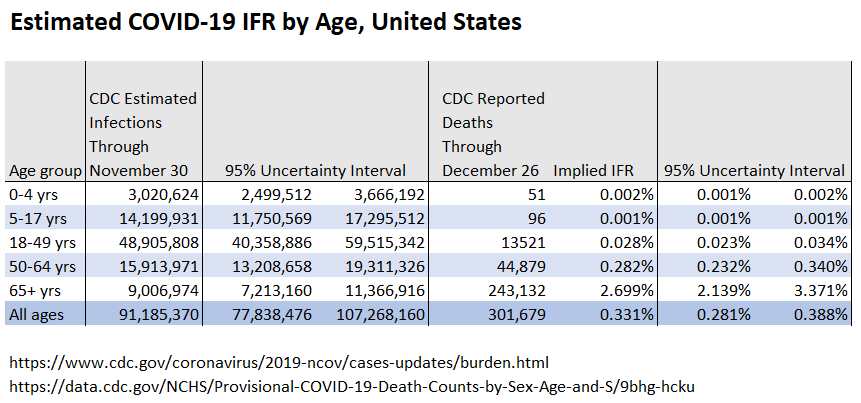
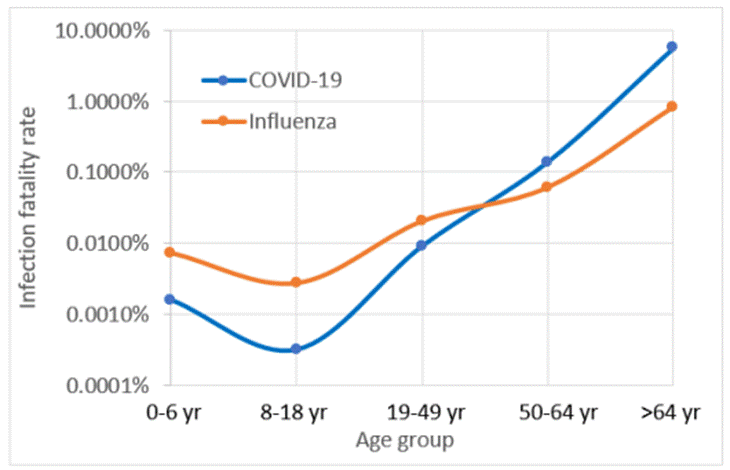
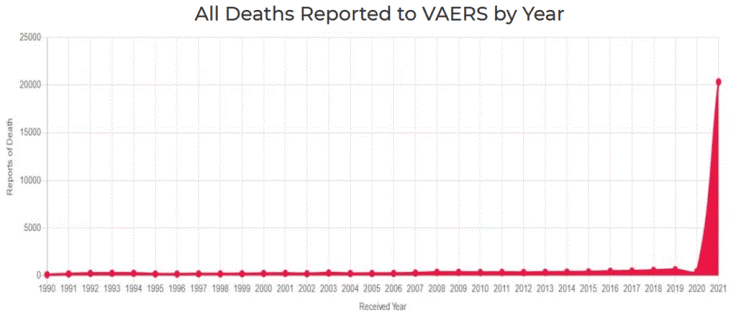
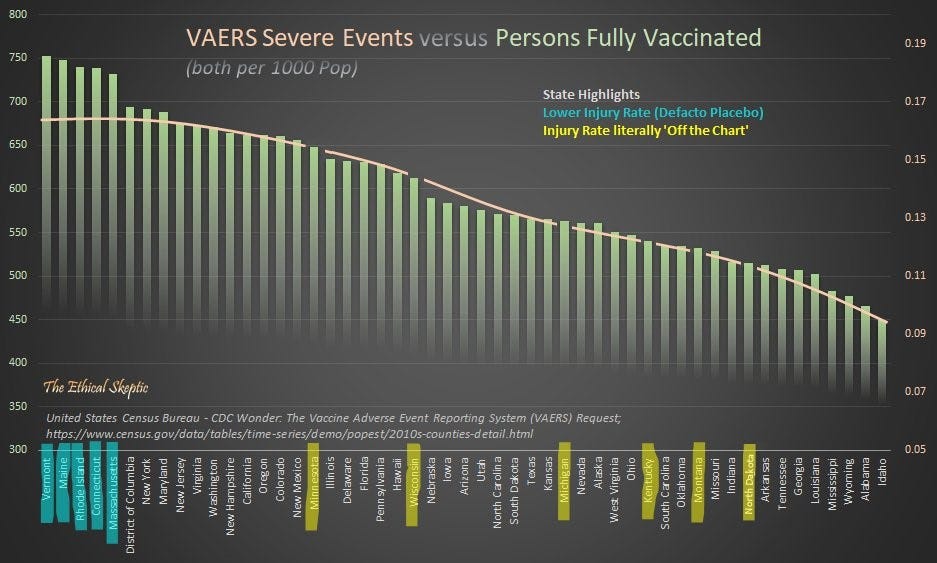
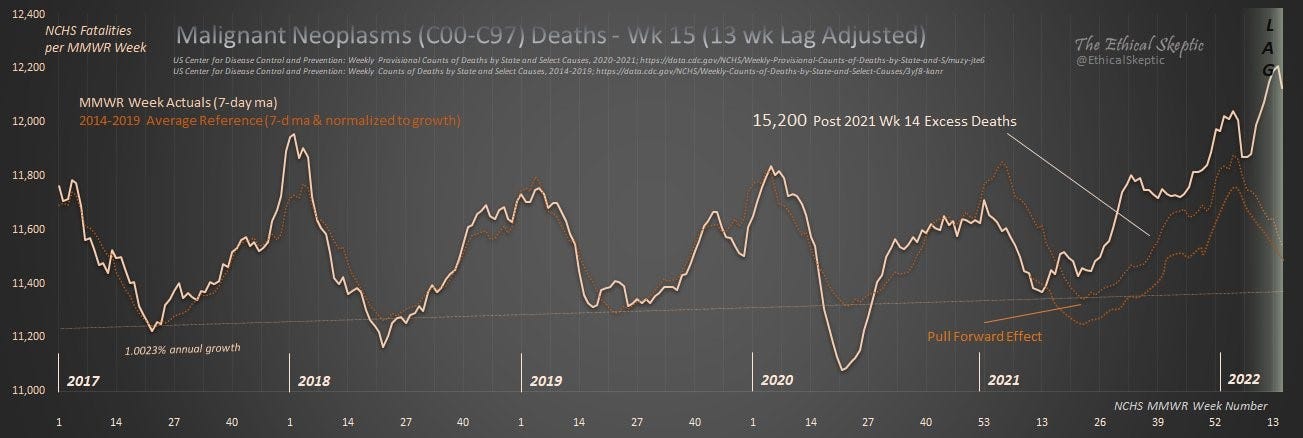
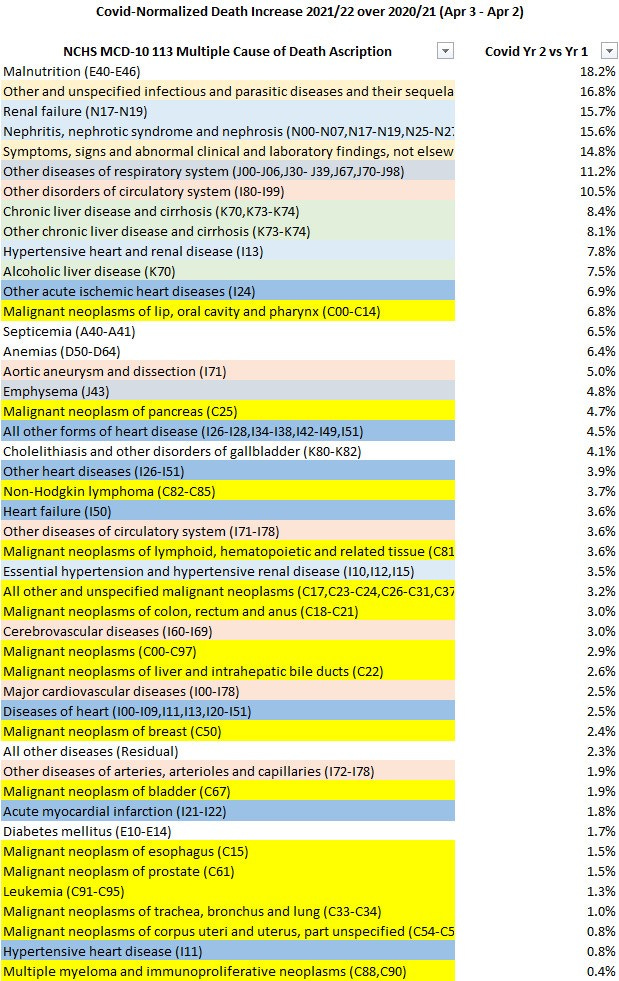
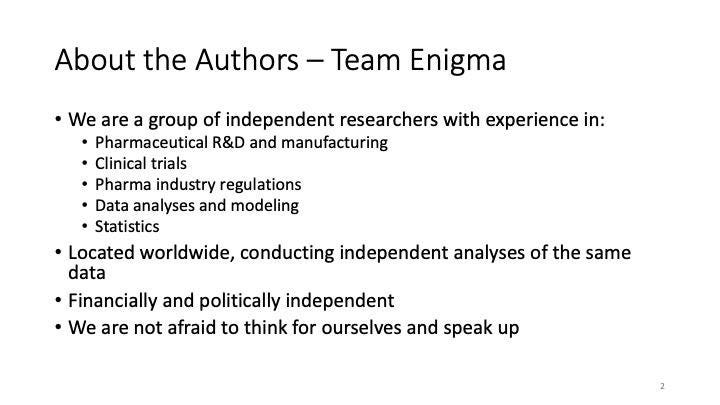
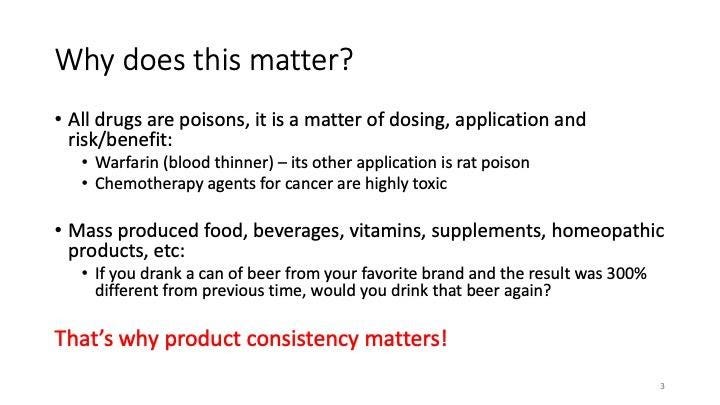
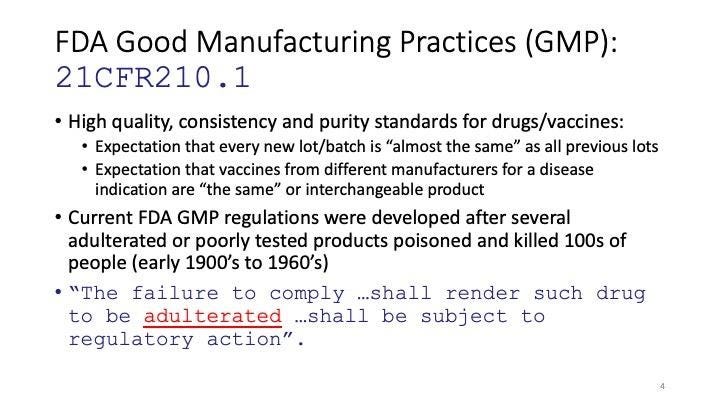
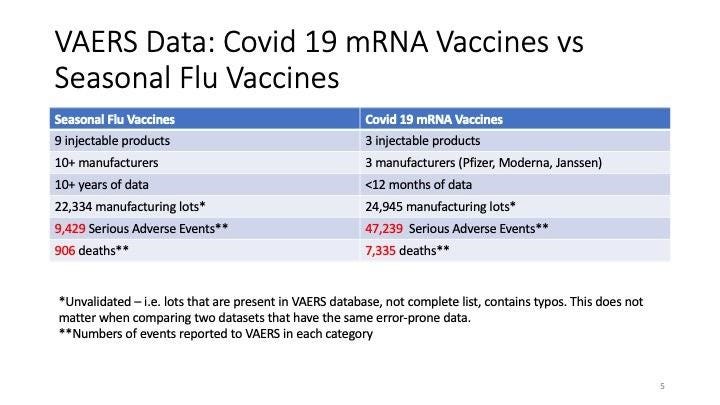
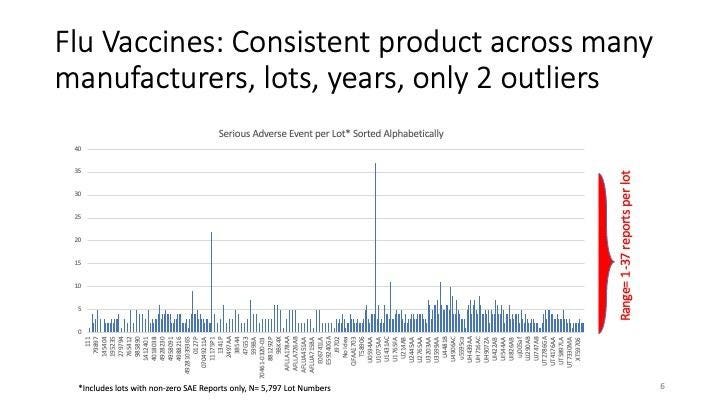
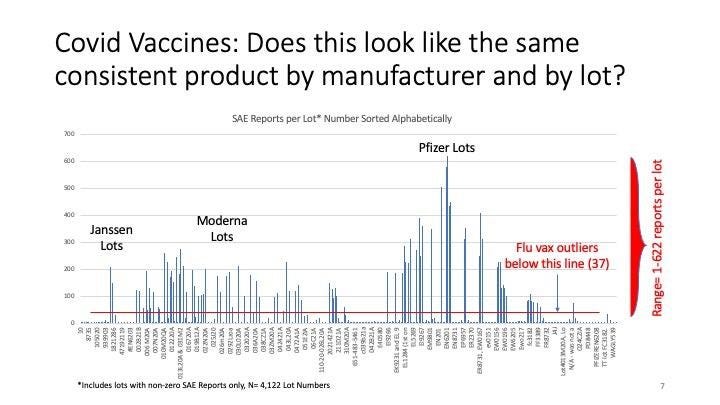
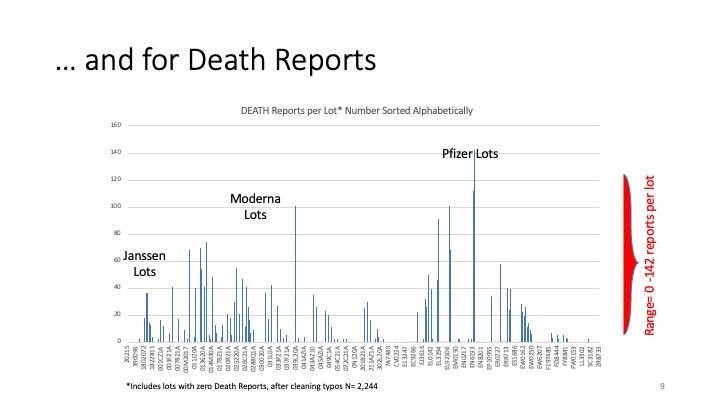
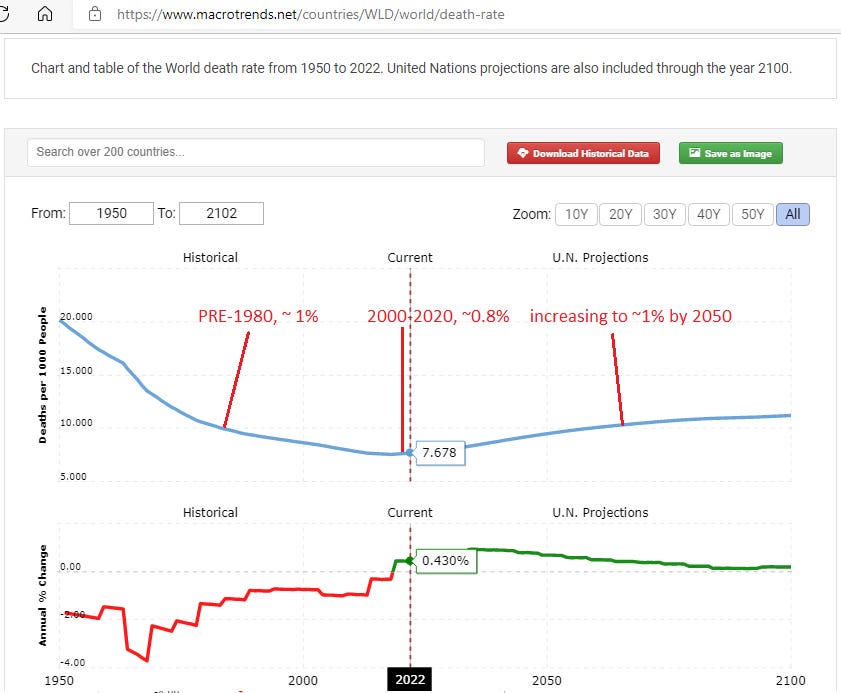

WHO pulled the same exact shit with H1N1
https://ragnarforseti.substack.com/p/flashback-2010-world-health-organization?r=hjhbr&s=w&utm_campaign=post&utm_medium=web